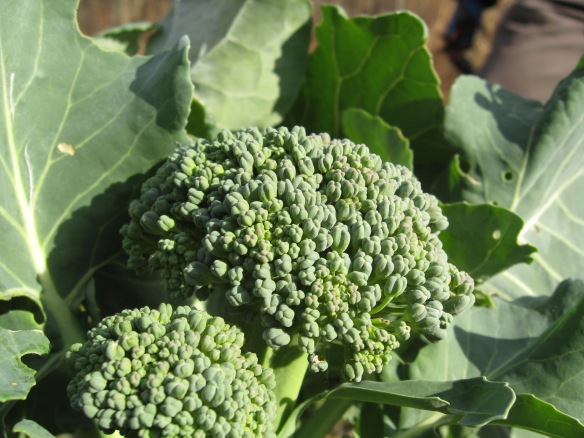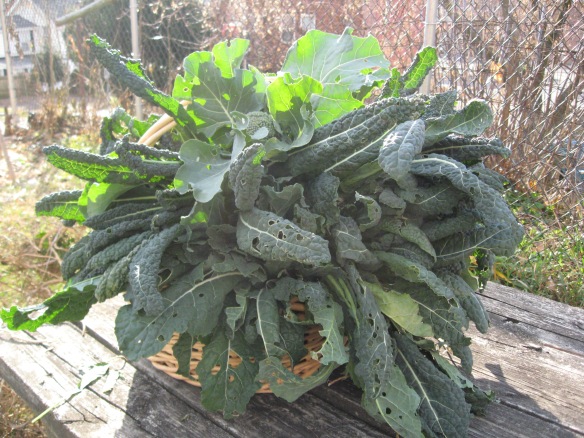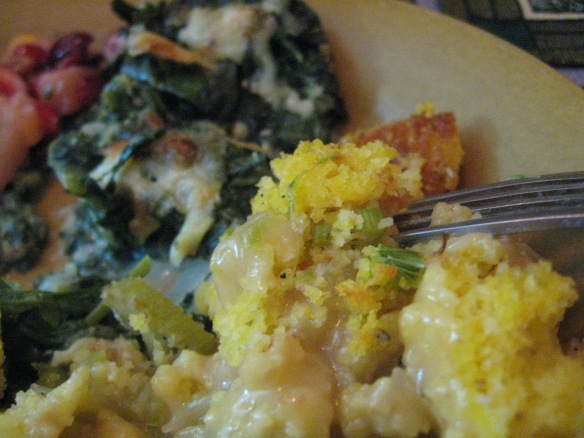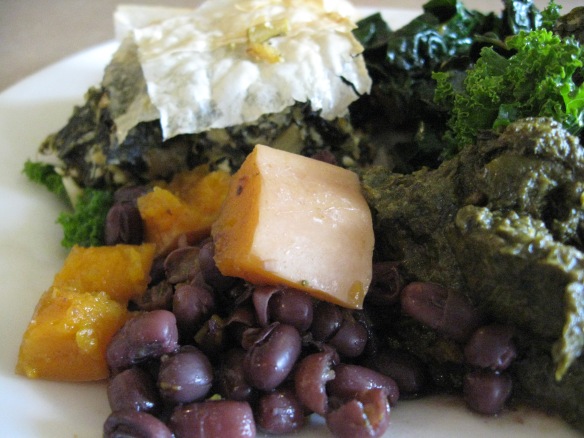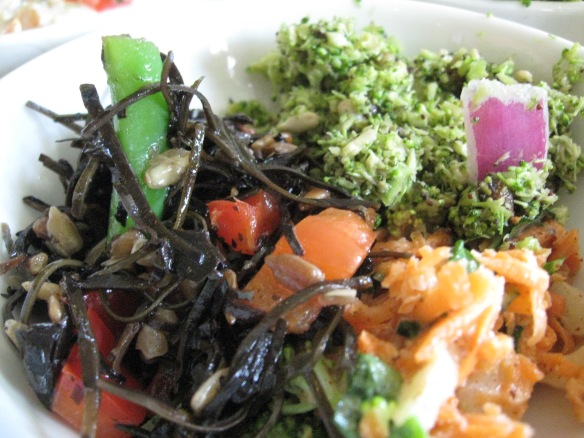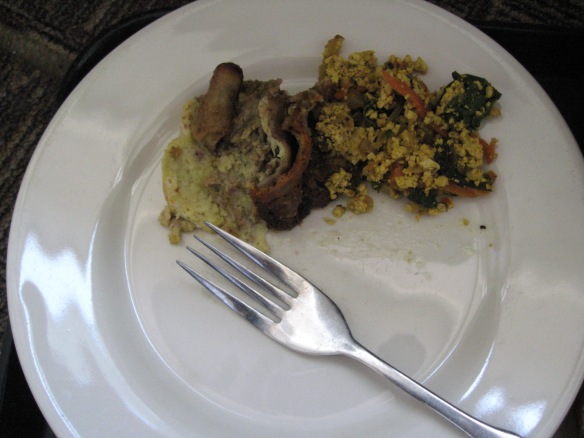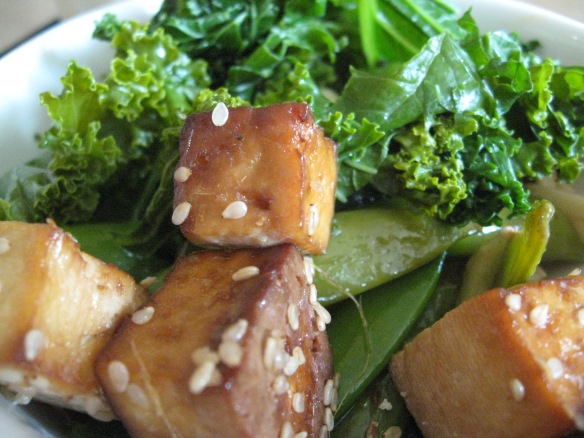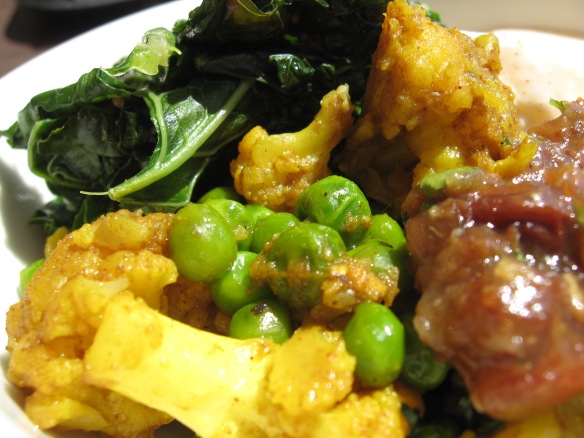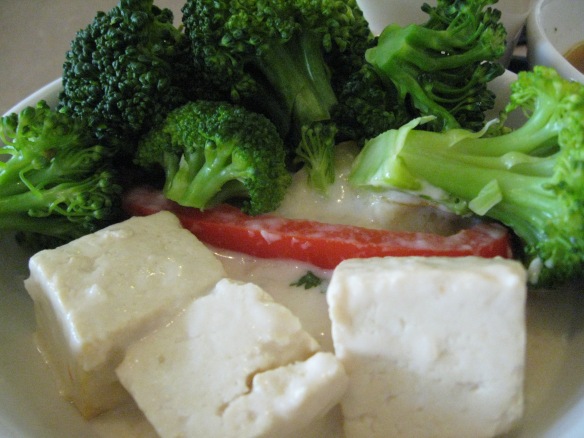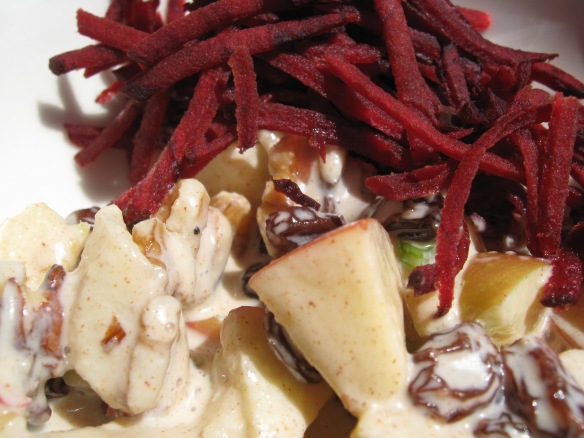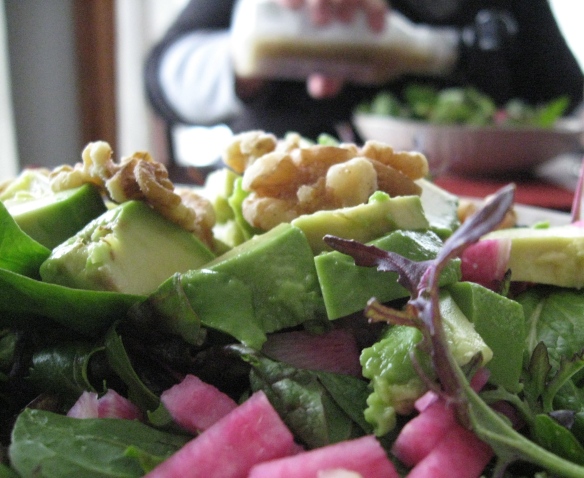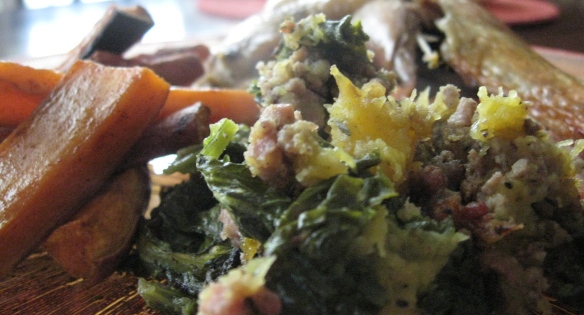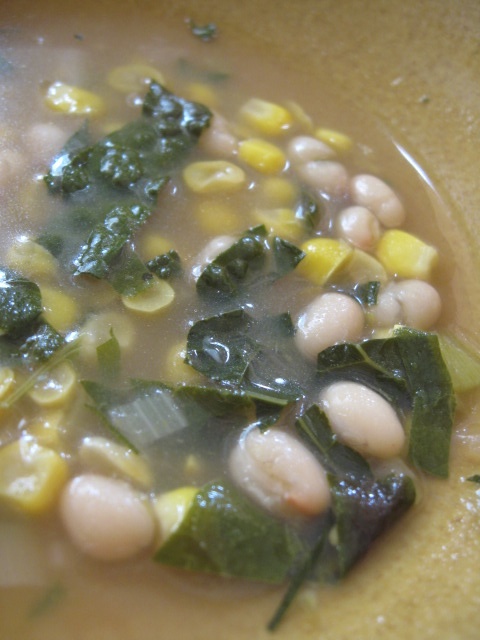This week, I signed up for my fifth growing season at the Community Gardens, while almost two feet of February snow drifted down to cover the ground.
But back in mid-November, there was that look of fall about the garden. A slight wind tripped brown leaves up the hill behind us; in the other plots, with corn stalks and fencing gone, minimal crops remained: brussels sprouts and fountains of purple, Russian, and curly kale.
In my own stripped plot, where we had gone to put the plants to bed, where we expected only the dead ends of things?
Surprise! Lacinato kale. Lots of it.
Not huge forests of kale, like that which flourished for my more accomplished gardening-neighbors, palm fronds off tall woody stems. But mine was beauteous, dark green and standing proud, though short in stature. A miniature field of somewhat miniature lacinato kale.
Broccoli, presumed spent, had also revived while I wasn’t looking, and grown several small wonderful heads. In addition, the chard had sprung up again. Like those weeds we had anticipated.
The garden mate was a little grumpy and tired in the November cold, but my joy over un-anticipated produce, in addition to the afternoon sunshine, soon made him grin.
We tugged up the ugly but functional orange fencing, along with the dirt that matted it down. Splattering soil across our faces made the work curse-worthy, and we did: splatter and then curse. Again and again. We yanked out the wilted but sturdy stalks of cosmos and bachelor buttons, noted that some purple alyssum still colored the ground, and used the picnic table to lay out fencing and roll up, roll up, roll up.
The sun went behind clouds just as the last bundle of fencing went into the shed; we gathered the reusable plant markers and piled up the rocks and bricks that had pinned black weed-suppressing fabric between the rows.
I had grand plans for follow-up soil amendment, garlic planting, and weed abatement. They didn’t happen. The sun stayed behind the clouds and within a few days, it dropped well below freezing.
At the end of my fourth year, I’d gotten good at fencing and set up, more-regular weeding and harvesting—but the end of season jobs? Like the rest of my life—still working on it.
The overflowing harvest basket sat in my dining room for a few days before I bundled the huge haul into the fridge. Bunches and bunches of kale and chard were washed then stir fried lightly or blanched, and packed into freezer bags. The first one came out at Thanksgiving when my daughter and I mixed some chard and kale to make her favorite “spinach” au gratin.
After her too-short visit, a piece of bad news slammed into my life and sank me in a pool of old grief, where I sat like a drowned stone. None of the activities that had appealed just hours before seemed worthwhile. Soft sleepiness from holiday exhaustion along with that day’s prospect of a lovely nap all dribbled away.
What To Do. Or Not Do. Radio? TV? No distractions promised help.
I chose instead to consider the frozen leftovers from Thanksgiving. I pulled out broth, simmered carefully from the carcass of the very expensive, very local, very delicious turkey (roasted with an onion inside and basted every thirty minutes for five hours), a good portion of which had been devoured with that yummy kale au gratin, and also cranberry orange relish, sour cream mashed potatoes and veggie-studded cornbread stuffing.
To the broth I added some trimmed cauliflower previously destined for curry. Then little nubs of carrots from my garden, also trimmed carefully.
As the soup began to bubble gently, so did the thoughts:
You grew this. You harvested and washed it. You made this.
….You can make things again!
Next I added an onion, and diced the package of celery left over when multiple people provided it for the Thanksgiving stuffing.
Finally, lacinato kale, again, that unexpected end of season harvest, when I thought it was all gone and there was a trash bag full, handful after handful harvested just before a hard, hard freeze.
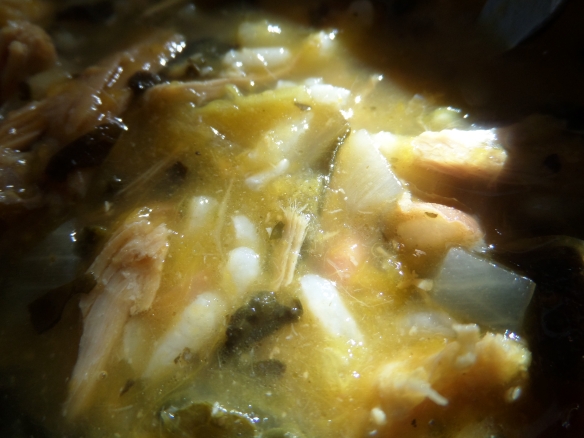
Even later–January’s turkey, kale, onion, garlic soup, whisked with steamed winter squash, and a few white beans thrown in.
You grew this; you cared for it, just like your life.
You can come back again, regardless of setbacks. You have the ingredients.
Your life is rich, with not only your own garden’s production, but other people’s plenty. Look in your cabinets and freezer: basil and apples and sage and parsley, peaches and rhubarb and collard greens, all gifted to you.
There is enough. More than enough.
Along with some surprises.
Remember that.
***
SPINACH AU GRATIN, adapted from Makeover Spinach Gratin at Skinnytaste.com
Preheat the oven to 425°. Sauté until translucent 1 cup finely chopped onion, in 2-3 TB butter, light butter or margarine. Mix in 1/4 cup flour and 1/4 tsp fresh grated nutmeg and cook for 2 minutes, stirring. Add 3 cups milk and cook until thickened, 5 to 7 minutes.
Defrost three pounds of frozen chopped spinach–or a mix of spinach, chard, kale or other chopped mild greens. More is possible, too! Squeeze out as much moisture as possible (you can save for cooking soup later if you want) and mix it into the onion roux. Then stir in 1/2 cup freshly grated Parmesan cheese, salt, and freshly ground pepper to taste. Put in large baking pan and top with 1/4 cup Parmesan cheese and 1/2 cup shredded Swiss Gruyere cheese. Bake for 20 minutes until hot and bubbly. Serve hot. Makes a little over 6 1/2 cups–or more if you are generous with your greens!


